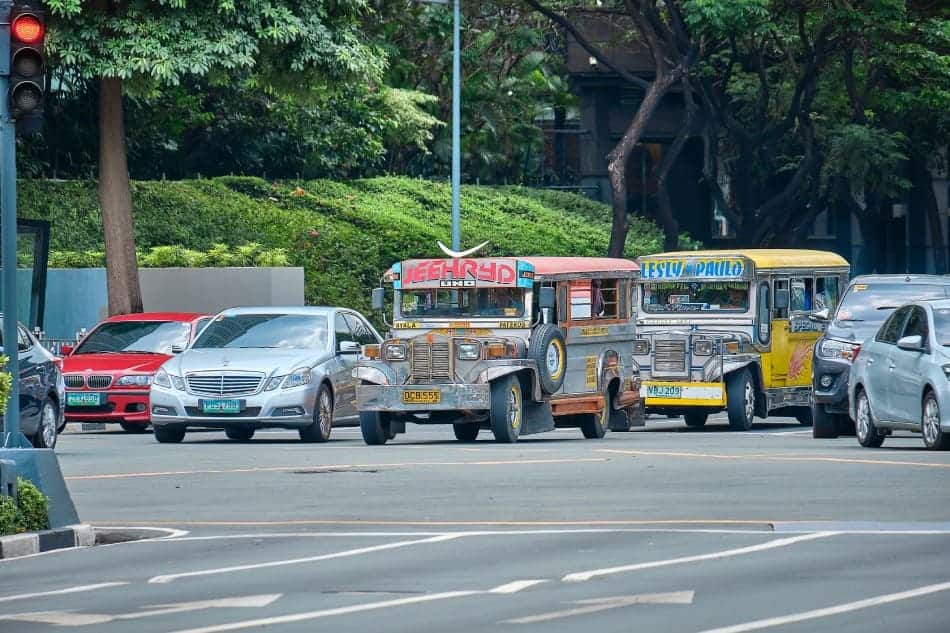Can A Foreigner Own A Car in The Philippines?
Is foreign car ownership in the Philippines an option, given the substantial restrictions against outsiders? I researched to find out if I could buy a car and, if so, whether it was worth the headache.
Foreigners can own a car in The Philippines. Financing is available from 1 year (12 months) to 5 years (60 months). You will need the appropriate down payment for the vehicle, 3-year Land Transportation Office (LTO) registration, comprehensive insurance, and the mortgage fee.
The Philippines offers world-class beaches, unrivaled diving opportunities, dazzling festivals with influences from the Spanish era, and friendly people.
To experience it all, you need a car; to drive that car, you need a Philippine driver’s license. At times, driving in The Philippines can be chaotic.
Valid Philippine Driver’s License and An Open Road
Written and practical tests will probably be waived if your current driver’s license has not expired. You will then be able to drive for 90 days from arrival with your foreign driver’s license and passport.
You can buy annual car insurance at the LTO office with cash. It costs about 2000 Pesos annually, and no cancellations or refunds are allowed. The LTO issues all licenses as well. There are offices throughout the Philippines.
Foreigners can choose to buy or rent a car. Third-party liability insurance is mandatory. This is for obvious reasons. The infrastructure in many places is poor.
Around 20% of roads are paved in the Philippines. The remainder are gravel or dirt roads. Expect to encounter potholes, flooding, and less-than-ideal driving conditions. At night, these roads are pitch dark, making things more dangerous.
International traffic laws remain the same. However, these are often disregarded, and stoplights are often ignored (especially in small towns).
Driving requires a lot of patience and concentration, especially for someone unfamiliar with the terrain.
Due to an insufficient number of sidewalks, floods of people can often be found spilling onto the road. Pedestrian crossings are often ignored.
Designated sidewalks and overpasses also tend to be disregarded. Pedestrians often use cell phones or are otherwise distracted. One must slow down and exercise great caution.
Brands To Be Found

If you have the cash and want to buy a new vehicle, almost every brand you can imagine is available for purchase.
There are 59 official car brands in the Philippines: Toyota, Mitsubishi, Suzuki, Ford, Honda, Nissan, Hyundai, Chevrolet, Audi, Dodge, BMW, Ferrari, Volkswagen, and more are available for purchase.
Should You Buy Used?
Buying a used one is probably cheaper, depending on the make and age of the vehicle. Buy from a reputable seller.
If possible, have a trusted Filipino friend accompany you and help you find the right vehicle. You do not want to buy a lemon and find yourself stranded somewhere.
Already Attached To A Vehicle?
What if you already own a vehicle and want to take it to the Philippines? Is that an option?
In the past, this was indeed available. Unfortunately, you can no longer import a second-hand vehicle to the Philippines.
Unless you are a returning citizen or hold a 13G visa (allowing for permanent residence in the Philippines), you are out of luck.
New vehicles can be shipped here, but the cost of duties and shipping is substantial and prohibitive.
Is A Car Really Necessary?
If you live in the middle of an urban area and are within walking distance of everything, then perhaps you do not need a car.
As a precaution, however, it is always good to have access to a car in an emergency. Reliable transportation to a hospital is always a plus. You do not want to be stuck hailing a taxi in an emergency.
Alternative Forms of Transport

Worried about your carbon footprint? Or perhaps the prospect of driving the unruly roads seems too intimidating? Cycling is another option, particularly around less populated areas.
You can take bicycles on domestic flights (disassembled) and, if there is sufficient room, stow your bike on a bus or jeepney (a Philippine jitney bus converted from a jeep).
Alternatively, you can catch a ferry or a bangka (the jeepney of the sea – small wooden boats that frequent the islands).
Tricycles
Tricycles (The philippine version of the rickshaw) are sidecars attached to motorcycles and can be found everywhere. They are suitable for traveling a few blocks or kilometers and can follow a set route or operate like taxis.
These are commonly found in small towns, cities, and rural areas. Passenger tricycles can carry up to 4 to 6 people, and possessions can be placed on the roof.
Fares are usually less than taxi fares, so this is a good option if you are looking to save a little cash and squeeze in some cardio.
Flooding
With the rainy season comes accompanying flooding. Drivers encounter this throughout the Philippines, and this is pronounced in areas below sea level.
You might want to strongly consider ditching the car and opting for an SUV or other vehicle with high clearance best suited for these conditions.
Low-clearance vehicles’ electrical and CPU systems are of particular concern and can bog down the car.
Driving through a flood higher than wading depth can damage the alternator and other systems. Your choice of vehicle plays a significant factor in how it holds up to these conditions.
Modifications
Modifications can be made to your vehicle to make it more resilient to these flooding conditions. Assisters for coil springs can be added to provide more height.
Bigger tires and rims are excellent, provided the tire can still fit the wheel well. The stiffened suspension will help cars on flooded roads with potholes.
This will steady the ride height. A snorkel can be installed in trucks and SUVs. This mod allows you to cross deeper water and pass through muddier areas. Damaging fluids like water and mud can be kept out of the engine.
Traffic Congestion in The Philippines
The layout of much of the Philippines is sometimes incompatible with the sheer density of the populations that occupy these lands.
The lack of infrastructure upgrades means the roads are overwhelmed with dense traffic in many areas. As one might suspect, fender benders and collisions are more likely in these conditions.
Being stuck in traffic is also a gas waste and results in more greenhouse gas emissions.
If you do not plan to travel much and stay in the same general area, skip the car and hop on board a tricycle, jeepney, bicycle, or bangka! You will get an intimate experience of the culture this way.
A Beautiful Paradise
The Philippines is a stunning location made all the more accessible by car. If you do not have the luxury of a vehicle, you will miss out on a golden opportunity to explore all the Philippines has to offer.
There is just so much to do and to explore. It makes the most economical sense to buy one unless you are spending a short stint. Follow the steps listed above, and you will be cruising quickly.
If you have money in hand, have met the previously stated requirements, and the car dealership has your vehicle of choice in stock, you could be experiencing the Philippines in a matter of hours!






